-
 Bitcoin
Bitcoin $117500
2.15% -
 Ethereum
Ethereum $3911
6.19% -
 XRP
XRP $3.316
10.79% -
 Tether USDt
Tether USDt $1.000
0.01% -
 BNB
BNB $787.2
2.24% -
 Solana
Solana $175.2
4.15% -
 USDC
USDC $0.9999
0.00% -
 Dogecoin
Dogecoin $0.2225
8.40% -
 TRON
TRON $0.3383
0.28% -
 Cardano
Cardano $0.7868
6.02% -
 Stellar
Stellar $0.4382
9.34% -
 Hyperliquid
Hyperliquid $40.92
7.56% -
 Sui
Sui $3.764
7.63% -
 Chainlink
Chainlink $18.48
10.66% -
 Bitcoin Cash
Bitcoin Cash $582.1
1.88% -
 Hedera
Hedera $0.2601
6.30% -
 Avalanche
Avalanche $23.33
4.94% -
 Ethena USDe
Ethena USDe $1.001
0.02% -
 Litecoin
Litecoin $122.3
2.04% -
 UNUS SED LEO
UNUS SED LEO $8.969
-0.27% -
 Toncoin
Toncoin $3.339
0.86% -
 Shiba Inu
Shiba Inu $0.00001287
4.30% -
 Uniswap
Uniswap $10.43
7.38% -
 Polkadot
Polkadot $3.861
5.08% -
 Dai
Dai $1.000
0.02% -
 Bitget Token
Bitget Token $4.513
3.41% -
 Monero
Monero $267.7
-6.18% -
 Cronos
Cronos $0.1499
4.14% -
 Pepe
Pepe $0.00001110
5.15% -
 Aave
Aave $284.9
8.28%
What is the ADA transaction fee?
ADA transaction fees on Cardano consist of a minimum fee of 0.153 ADA and a size-based fee, calculated as (size * 0.0000431) + 0.155381 ADA, ensuring network efficiency and security.
Apr 19, 2025 at 08:49 pm
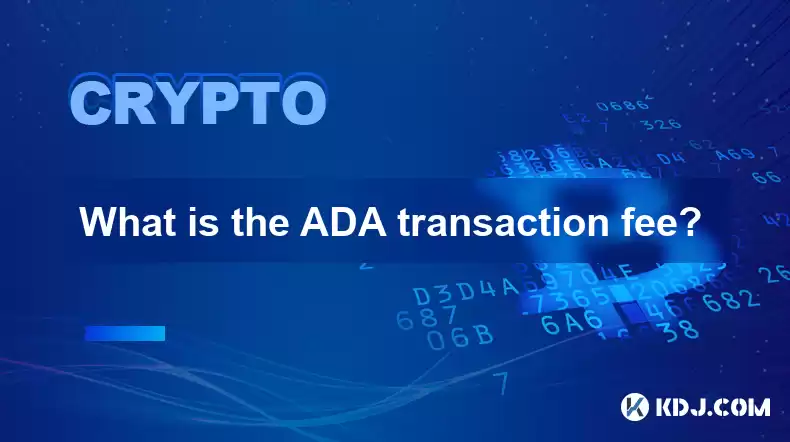
The ADA transaction fee is a critical component of the Cardano blockchain, designed to ensure the network's efficiency and security. Understanding the intricacies of the ADA transaction fee is essential for anyone using the Cardano network, whether for simple transactions or more complex smart contract interactions. This article delves into the specifics of the ADA transaction fee, exploring its calculation, factors affecting it, and practical implications for users.
What Constitutes the ADA Transaction Fee?
The ADA transaction fee on the Cardano network is composed of two primary components: the minimum fee and the size-based fee. The minimum fee ensures that every transaction contributes to the network's upkeep, while the size-based fee accounts for the complexity and size of the transaction data.
- Minimum Fee: This is a fixed amount that every transaction must pay, currently set at 0.153 ADA. This fee is non-negotiable and ensures that even the smallest transactions contribute to the network's operational costs.
- Size-Based Fee: This fee is calculated based on the size of the transaction in bytes. The formula for this fee is
a size + b, whereais a coefficient set to 0.0000431 ADA per byte, andbis a constant set to 0.155381 ADA. This means that larger transactions, which require more data to process, will incur higher fees.
How is the ADA Transaction Fee Calculated?
To calculate the total transaction fee, you need to combine the minimum fee and the size-based fee. Here's a step-by-step process to determine the fee:
- Determine the Transaction Size: First, calculate the size of your transaction in bytes. This can be done using various tools and wallets that interact with the Cardano network.
- Calculate the Size-Based Fee: Multiply the transaction size by the coefficient
a(0.0000431 ADA per byte) and add the constantb(0.155381 ADA). The formula issize-based fee = (size 0.0000431) + 0.155381. - Add the Minimum Fee: Add the minimum fee of 0.153 ADA to the size-based fee to get the total transaction fee.
For example, if your transaction size is 200 bytes, the size-based fee would be (200 0.0000431) + 0.155381 = 0.163981 ADA. Adding the minimum fee, the total transaction fee would be 0.163981 + 0.153 = 0.316981 ADA.
Factors Affecting the ADA Transaction Fee
Several factors can influence the ADA transaction fee, including:
- Transaction Complexity: More complex transactions, such as those involving multiple inputs or outputs, will have a larger size and thus a higher fee.
- Network Congestion: Although Cardano uses a different consensus mechanism than some other blockchains, high network activity can still lead to slightly higher fees due to increased transaction sizes and processing demands.
- Wallet and Tool Settings: Some wallets and tools may allow users to adjust the fee settings, which can affect the total fee paid. Users should be aware of these settings to optimize their transaction costs.
Practical Implications of ADA Transaction Fees
Understanding the practical implications of ADA transaction fees is crucial for users. Here are some key points to consider:
- Budgeting for Fees: Users should always account for transaction fees when planning their ADA transactions. This is particularly important for those engaging in frequent or high-value transactions.
- Fee Optimization: By understanding how fees are calculated, users can take steps to minimize their costs. This might involve consolidating transactions or using wallets that offer fee optimization features.
- Impact on Smart Contracts: For those using Cardano for smart contracts, understanding the fee structure is essential. Smart contracts can involve multiple transactions and thus higher fees, which need to be factored into the overall cost of deployment and execution.
How to Check and Pay ADA Transaction Fees
To check and pay ADA transaction fees, users can follow these steps using a Cardano wallet:
- Select a Cardano Wallet: Choose a reputable wallet that supports Cardano, such as Daedalus or Yoroi.
- Initiate a Transaction: Enter the recipient's address and the amount of ADA you wish to send.
- Review the Transaction Details: The wallet will display the estimated transaction fee based on the transaction size and the current network parameters.
- Adjust the Fee (if applicable): Some wallets allow users to adjust the fee. If this option is available, you can tweak the fee to balance speed and cost.
- Confirm and Send: Once you are satisfied with the fee and other transaction details, confirm the transaction. The wallet will then broadcast the transaction to the Cardano network, and the fee will be deducted from your account.
Common Scenarios and Examples of ADA Transaction Fees
To illustrate how ADA transaction fees work in practice, consider these common scenarios:
- Simple Transfer: A simple transfer of ADA from one wallet to another might involve a transaction size of around 100 bytes. The size-based fee would be
(100 0.0000431) + 0.155381 = 0.160381 ADA. Adding the minimum fee, the total fee would be0.160381 + 0.153 = 0.313381 ADA. - Multiple Outputs: If a transaction involves multiple outputs, such as sending ADA to several recipients, the transaction size could increase to 300 bytes. The size-based fee would be
(300 0.0000431) + 0.155381 = 0.175381 ADA. Adding the minimum fee, the total fee would be0.175381 + 0.153 = 0.328381 ADA. - Smart Contract Execution: Executing a smart contract might involve a transaction size of 500 bytes. The size-based fee would be
(500 0.0000431) + 0.155381 = 0.176381 ADA. Adding the minimum fee, the total fee would be0.176381 + 0.153 = 0.329381 ADA.
Frequently Asked Questions
Q: Can the ADA transaction fee change over time?
A: Yes, the Cardano network's governance model allows for adjustments to the transaction fee parameters. These changes are typically made through community proposals and voting, ensuring that the fee structure remains fair and efficient.
Q: Are there any ways to avoid paying ADA transaction fees?
A: No, every transaction on the Cardano network must include a fee to be processed. However, users can optimize their transactions to minimize fees by understanding the fee structure and using tools that offer fee optimization features.
Q: How do ADA transaction fees compare to other cryptocurrencies?
A: ADA transaction fees are generally considered to be relatively low compared to many other cryptocurrencies. The transparent and predictable fee structure of Cardano makes it an attractive option for users looking to minimize transaction costs.
Q: Can I set a custom transaction fee on Cardano?
A: Some Cardano wallets allow users to adjust the transaction fee within certain limits. This feature can be useful for users looking to balance transaction speed and cost, but the minimum fee requirement must always be met.
Disclaimer:info@kdj.com
The information provided is not trading advice. kdj.com does not assume any responsibility for any investments made based on the information provided in this article. Cryptocurrencies are highly volatile and it is highly recommended that you invest with caution after thorough research!
If you believe that the content used on this website infringes your copyright, please contact us immediately (info@kdj.com) and we will delete it promptly.
- Tron's Sell-Off Spurs Altcoin Shift: What's Next for TRX?
- 2025-08-08 08:30:12
- Sleep Token's US Takeover: Thornhill Rides the 'Even In Arcadia' Wave
- 2025-08-08 08:30:12
- FTT Token's Wild Ride: Creditor Repayments vs. Market Drop - A New Yorker's Take
- 2025-08-08 07:10:12
- Floki Crypto Price Prediction: Riding the Robinhood Rocket or Just a Meme?
- 2025-08-08 07:15:12
- EigenLayer, Restaking, and Ethereum: Navigating the Hype and the Hazards
- 2025-08-08 06:30:12
- Super Bowl 59: Jon Batiste to Jazz Up the National Anthem
- 2025-08-08 06:30:12
Related knowledge

Where can I buy UMA (UMA)?
Aug 07,2025 at 06:42pm
Understanding UMA and Its Role in Decentralized FinanceUMA (Universal Market Access) is an Ethereum-based decentralized finance (DeFi) protocol design...

What exchanges support buying IOTA (MIOTA)?
Aug 07,2025 at 09:58pm
Understanding the Role of Private Keys in Cryptocurrency SecurityIn the world of cryptocurrency, private keys are the cornerstone of ownership and con...
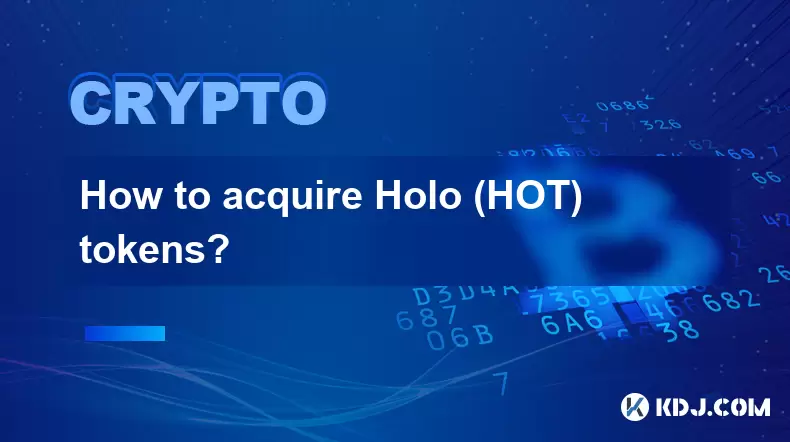
How to acquire Holo (HOT) tokens?
Aug 08,2025 at 05:56am
Understanding Holo (HOT) and Its EcosystemHolo (HOT) is a cryptocurrency token associated with the Holo ecosystem, which is built on the Holochain fra...
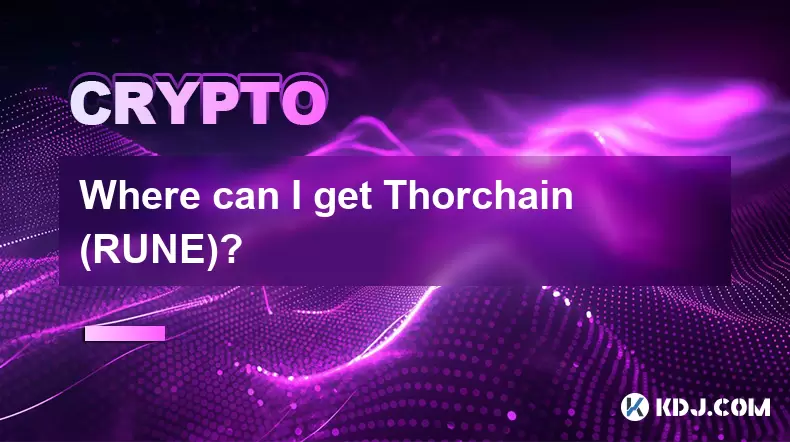
Where can I get Thorchain (RUNE)?
Aug 08,2025 at 08:07am
Understanding the Role of Seed Phrases in Cryptocurrency WalletsA seed phrase, also known as a recovery phrase or mnemonic phrase, is a critical compo...
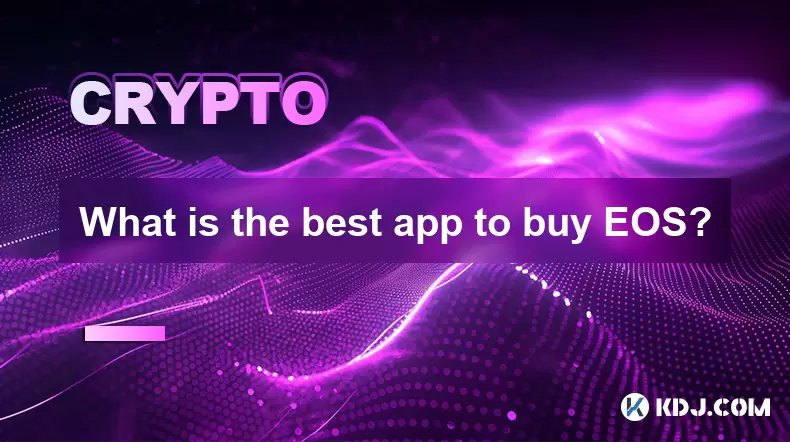
What is the best app to buy EOS?
Aug 07,2025 at 04:35pm
Understanding EOS and Its Role in the Cryptocurrency EcosystemEOS is a blockchain platform designed to support decentralized applications (dApps) with...
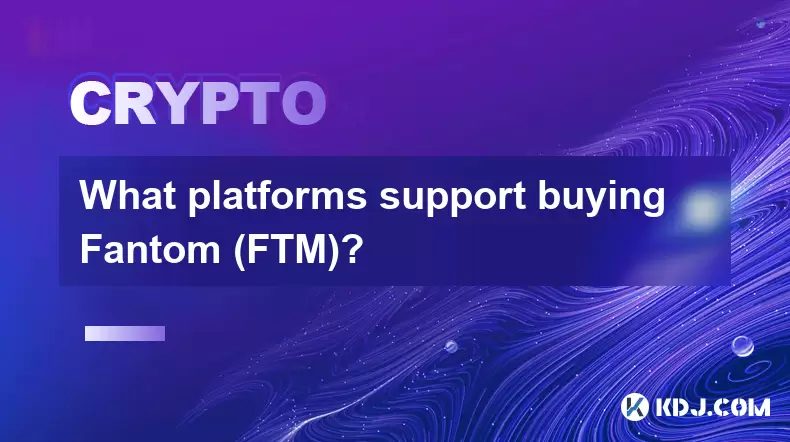
What platforms support buying Fantom (FTM)?
Aug 08,2025 at 01:56am
Overview of Fantom (FTM) and Its EcosystemFantom (FTM) is a high-performance, scalable, and secure layer-1 blockchain designed to overcome the limitat...

Where can I buy UMA (UMA)?
Aug 07,2025 at 06:42pm
Understanding UMA and Its Role in Decentralized FinanceUMA (Universal Market Access) is an Ethereum-based decentralized finance (DeFi) protocol design...

What exchanges support buying IOTA (MIOTA)?
Aug 07,2025 at 09:58pm
Understanding the Role of Private Keys in Cryptocurrency SecurityIn the world of cryptocurrency, private keys are the cornerstone of ownership and con...

How to acquire Holo (HOT) tokens?
Aug 08,2025 at 05:56am
Understanding Holo (HOT) and Its EcosystemHolo (HOT) is a cryptocurrency token associated with the Holo ecosystem, which is built on the Holochain fra...

Where can I get Thorchain (RUNE)?
Aug 08,2025 at 08:07am
Understanding the Role of Seed Phrases in Cryptocurrency WalletsA seed phrase, also known as a recovery phrase or mnemonic phrase, is a critical compo...

What is the best app to buy EOS?
Aug 07,2025 at 04:35pm
Understanding EOS and Its Role in the Cryptocurrency EcosystemEOS is a blockchain platform designed to support decentralized applications (dApps) with...

What platforms support buying Fantom (FTM)?
Aug 08,2025 at 01:56am
Overview of Fantom (FTM) and Its EcosystemFantom (FTM) is a high-performance, scalable, and secure layer-1 blockchain designed to overcome the limitat...
See all articles

























































































